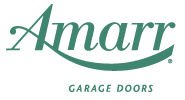What do you know about garage doors? It seems that most of us don't think about them until we need to buy garage doors. Only then do we realize how complicated it can be to choose a garage door. In addition to functionality, they must be strong enough to battle the elements, protect against theft and also remain attractive. Here are some of the most commons questions asked when you buy garage doors.
1. What is R-Value and does it matter? R-value is a way of gauging a material's level of insulation. A higher number means more insulation. When you buy garage doors, anything over 9 is a very good R-value.
Insulating garage doors is important for several reasons. First of all, if you use your garage as a workroom or spend a lot of time in it, then you will want a higher R-value to protect against cold or heat. Also, insulation can protect against water moisture and damage to whatever is stored in your garage.
2. What do headroom, backroom, and sideroom mean? When you buy garage doors, you will hear these terms. The headroom is the measurement between the top of the garage door and the ceiling. Backroom is the clearance required for the length of travel for a garage door, going from the opening to the back. Sideroom is the measurement between the sides of the door opening and the walls. This is important to know for when you buy garage doors because the hardware needs ample room in order to operate.
3. Can I install my own garage door? Many people who buy garage doors want to save money with Do It Yourself (DIY) installation. Some garage doors offer extension springs and some offer torsion springs. Extension springs stretch when the doors go down. Extension springs are the easiest to install. Torsion springs will wind for tensioning. Torsion springs can be very dangerous because they are tensioned with considerable pressure. Winding devices are sometimes offered, which allow you to simply wind the torsion springs with a power drill. This device safely and simply ratchets the tension to the proper number of turns. Torsion springs are most frequently tensioned using 2 hardened steel rods. A rod is inserted into the spring fitting, then pulled down to begin the winding process. Using a hand over hand motion, you will wind the spring a quarter of a turn at a time, to the proper number of turns. Always follow springing instructions very closely or use a professional to install the torsion springs if you are not comfortable with the process.
4. How long do garage doors last? The lifespan of a garage door can be several decades. However, this amount varies depending on how often you make the door go up and down (cycles). That is because it is not always the actual door itself which determines the lifespan of a garage door, it can be the hardware and springs.
When you buy garage doors, you will generally have a choice of torsion spring cycles of standard 10K, or upgraded cycles of 25K, 50K, 75K and 100K. The higher the torsion spring cycle level, the more times your garage door will be able to go up and down before spring failure. 5. Can I paint my garage door? Even though there are many options available today for when you buy garage doors, you are still usually pretty limited in terms of color. Luckily, you can paint garage doors yourself.
When painting steel garage doors, make sure that you are using a high-quality latex paint which is for outdoor use. There are even some types of paint especially for garage doors. If you use an oil-based paint, the sun will cause it to bubble and the paint will begin to peel. If you buy garage doors made from wood or fiberglass, you may have more options for paint types but the paint should still be for outdoor use and of high-quality.





